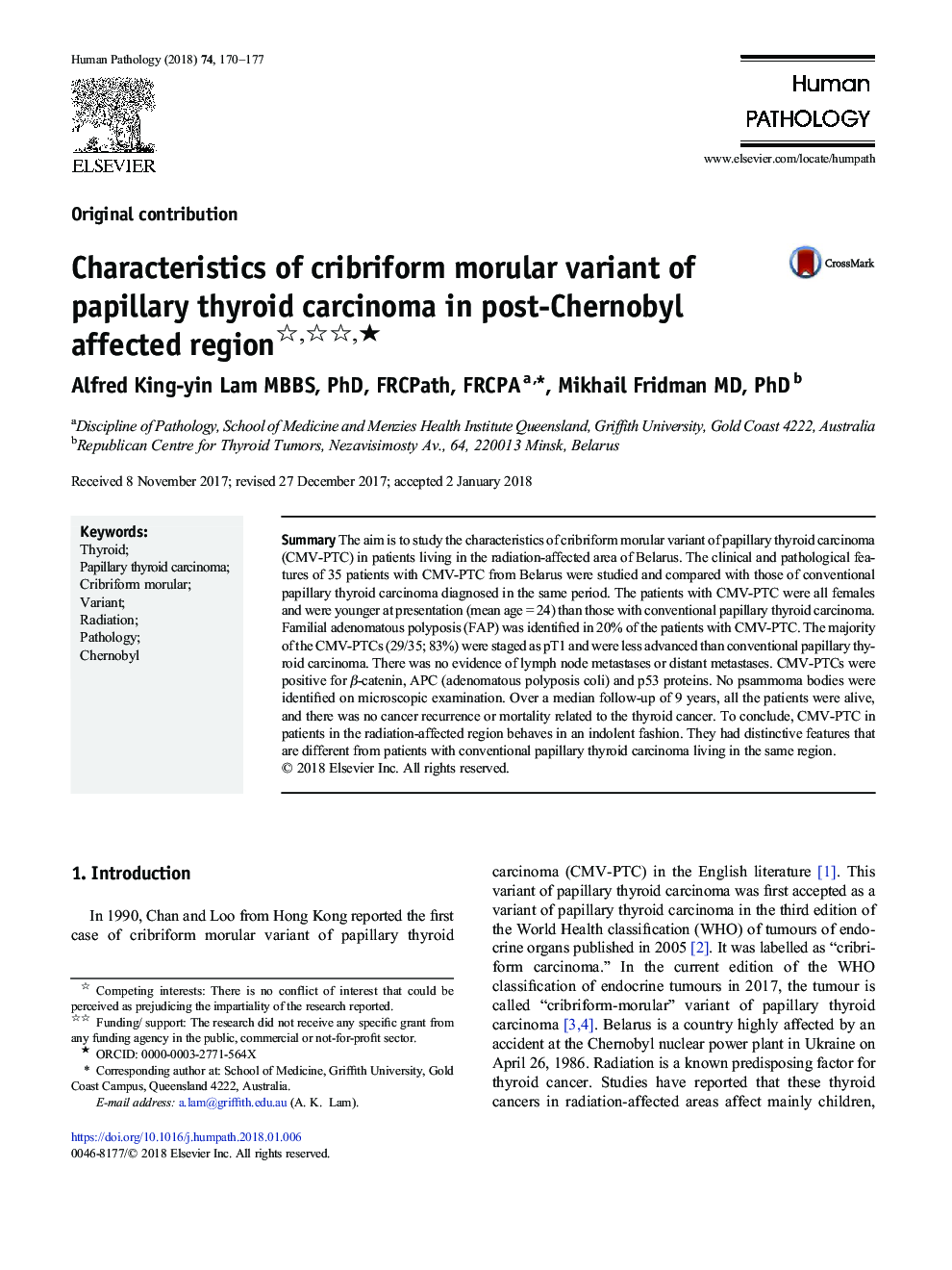| Article ID | Journal | Published Year | Pages | File Type |
|---|---|---|---|---|
| 8807591 | Human Pathology | 2018 | 8 Pages |
Abstract
The aim is to study the characteristics of cribriform morular variant of papillary thyroid carcinoma (CMV-PTC) in patients living in the radiation-affected area of Belarus. The clinical and pathological features of 35 patients with CMV-PTC from Belarus were studied and compared with those of conventional papillary thyroid carcinoma diagnosed in the same period. The patients with CMV-PTC were all females and were younger at presentation (mean age = 24) than those with conventional papillary thyroid carcinoma. Familial adenomatous polyposis (FAP) was identified in 20% of the patients with CMV-PTC. The majority of the CMV-PTCs (29/35; 83%) were staged as pT1 and were less advanced than conventional papillary thyroid carcinoma. There was no evidence of lymph node metastases or distant metastases. CMV-PTCs were positive for β-catenin, APC (adenomatous polyposis coli) and p53 proteins. No psammoma bodies were identified on microscopic examination. Over a median follow-up of 9 years, all the patients were alive, and there was no cancer recurrence or mortality related to the thyroid cancer. To conclude, CMV-PTC in patients in the radiation-affected region behaves in an indolent fashion. They had distinctive features that are different from patients with conventional papillary thyroid carcinoma living in the same region.
Related Topics
Health Sciences
Medicine and Dentistry
Pathology and Medical Technology
Authors
Alfred King-yin MBBS, PhD, FRCPath, FRCPA, Mikhail MD, PhD,
